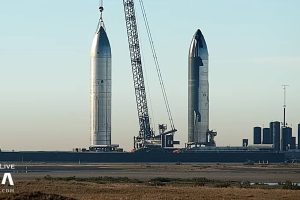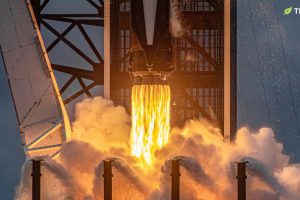- 🚀 SpaceX will develop a Deorbit Vehicle for NASA.
- 🛰️ The International Space Station’s operational life will end by 2030.
- 🤝 NASA and international partners aim for a controlled deorbit to ensure safety.
- 🧭 The deorbit mission supports future commercial destinations in space.
- 🌍 The International Space Station has been operated by five space agencies since 1998.
In an exciting development in the world of aerospace, NASA has announced a collaboration with SpaceX to deorbit the International Space Station (ISS) by 2030. This monumental task will involve the construction of a specialized Deorbit Vehicle by SpaceX, ensuring the controlled and safe transition of the ISS. As the operational life of this iconic space laboratory nears its end, this move signifies more than just the disposal of an aging spacecraft; it paves the way for future commercial initiatives and continued exploration in low Earth orbit.
The End of an Era: The ISS Nears Its Retirement
Since its launch in 1998, the International Space Station has been a joint project facilitated by five major space agencies: NASA, the Canadian Space Agency (CSA), the European Space Agency (ESA), the Japan Aerospace Exploration Agency (JAXA), and the State Space Corporation Roscosmos. Over the past two decades, the ISS has stood as a testament to international collaboration, scientific research, and technological innovation.
As we approach 2030, the ISS is set to conclude its mission, marking the end of an era in space exploration. The decision to deorbit the ISS in a controlled manner is crucial for ensuring global safety and supporting the continued use of space near Earth for future missions.
The Role of SpaceX in Deorbiting the ISS
SpaceX’s Deorbit Vehicle
To achieve the ambitious goal of deorbiting the ISS, NASA has enlisted the expertise of SpaceX to develop the U.S. Deorbit Vehicle. This groundbreaking vehicle will play a critical role in ensuring that the deorbit process is carried out safely and efficiently.
Significance of a Controlled Deorbit
- Safety First: By employing a controlled deorbit, NASA and its international partners can mitigate risks associated with uncontrolled re-entries that could potentially pose threats to populated areas.
- Science and Research Continuity: The plan ensures that the ongoing and future scientific research and commercial activities can transition smoothly to new platforms without significant disruption.
Future of Low Earth Orbit: Commercial Destinations
One of the most significant implications of the ISS deorbit mission is its support for future low Earth orbit commercial destinations. The groundwork laid by over two decades of ISS operations provides a robust blueprint for new endeavors in space.
- Commercial Space Stations: Companies could leverage the experience and technology gained to build commercial space stations aimed at research, tourism, and more.
- Private-Public Collaborations: The mission highlights the potential for future collaborations between government agencies and private companies, fostering an environment of innovation and growth in the aerospace sector.
Impact on Space Agencies and Global Collaboration
The ISS has been a cornerstone of international cooperation in space exploration. As it gears towards its final descent, it is essential to acknowledge the collective efforts of all participating space agencies that have contributed to its success.
- NASA: Leading the deorbit mission, NASA reinforces its commitment to safe and sustainable exploration.
- CSA, ESA, JAXA, Roscosmos: These agencies will continue to play pivotal roles in international collaborations, supporting new projects that benefit from the ISS legacy.
Conclusion: A Gateway to New Horizons
The planned deorbit of the ISS by SpaceX and NASA represents more than just the end of a mission; it embodies the transition to new frontiers in space exploration and commercialization. As we bid farewell to the ISS, we open the door to innovative opportunities that will propel humanity further into the cosmos. It is a time to celebrate the achievements of the past and to eagerly await the advancements of the future.
With SpaceX’s Deorbit Vehicle, NASA’s strategic vision, and the steadfast support of international partners, the future of space exploration promises to be as thrilling and groundbreaking as the ISS itself.





